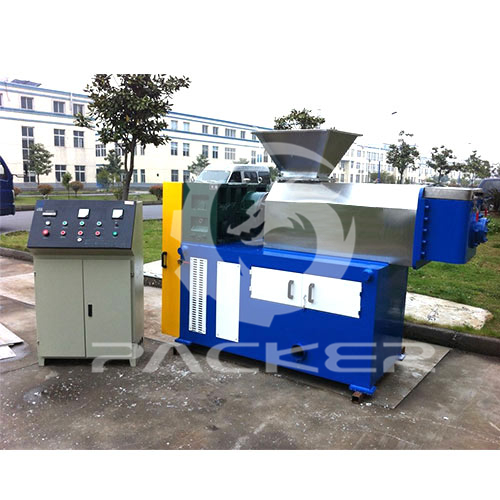Here are the key components and stages of a typical waste plastic washing line
2023-12-27
A waste plastic washing line is a system used in the recycling industry to process and clean plastic waste materials, such as PET bottles, HDPE containers, and other types of plastic packaging. The primary goal of a plastic washing line is to recover high-quality plastic flakes that can be used as raw material for the production of new plastic products. The process involves several stages to remove contaminants, labels, and other impurities from the collected plastic waste. Here are the key components and stages of a typical waste plastic washing line:
1. Sorting and Collection:
- Plastic waste is collected from various sources, such as recycling centers, households, or industrial facilities. It may include a mix of different types of plastic materials.
2. Shredding:
- The collected plastic waste is shredded into smaller pieces using industrial shredders. This process increases the surface area of the plastic, making it easier to clean and process.
3. Metal Detection and Removal:
- Metal detectors are used to identify and remove any metal contaminants that may be present in the shredded plastic. Metal can damage processing equipment and affect the quality of the recycled plastic.
4. Pre-Washing:
- The shredded plastic undergoes a pre-washing step where it is rinsed with water to remove some of the initial contaminants, dirt, and debris.
5. Sink-Float Separation (Density Separation):
- In this step, the plastic flakes are introduced to a water tank, where materials with different densities separate. Heavier contaminants, such as PVC (polyvinyl chloride), sink to the bottom, while lighter plastics float.
6. Label Separation:
- Labels and other residues are removed from the plastic flakes. This can be done through various techniques, such as air classification or additional washing steps.
7. Friction Washing:
- Friction washers use high-speed rotating paddles or brushes to scrub the plastic flakes, further removing impurities and contaminants. The friction washing process helps achieve a higher level of cleanliness.
8. Hot Washing:
- The plastic flakes may undergo hot washing using water and detergents at an elevated temperature. This helps to remove any remaining contaminants and ensures thorough cleaning.
9. Rinsing and Drying:
- The plastic flakes are thoroughly rinsed to remove cleaning agents and residues. After rinsing, the plastic flakes are dried to reduce moisture content, preparing them for subsequent processing.
10. Quality Control:
- Quality control measures are implemented to ensure that the cleaned plastic flakes meet the required standards for purity and quality.
11. Pelletizing or Extrusion:
- The cleaned and dried plastic flakes are often pelletized or extruded into granules. These granules can be used as raw material for manufacturing new plastic products.
Waste plastic washing lines are crucial in the recycling process, helping to transform plastic waste into a valuable resource. The efficiency and effectiveness of a washing line depend on the quality of the equipment used, the design of the process, and the adherence to environmental and quality standards. Properly cleaned and processed plastic flakes contribute to the circular economy by reducing the demand for virgin plastic and minimizing environmental impact.



